Day: 01/09/2023
To grasp how serotonin works on the brain, look to the gut
If you are driving home from work along a road you’ve travelled numerous times before, your mind is likely to wander. You might become absorbed by a great conversation on the radio, or start rehearsing for an important meeting the next day. You steer your car down your usual route in a largely automatic way, without having to pay deliberate attention to the steering wheel, the subtle movements of your feet on the pedals, or the ever-changing traffic conditions around you. Yet if you encounter a sudden cognitive challenge, such as an unexpected road closure, you are quickly able to shift gears, identifying a new route home via a side street that you rarely use.
This kind of shift toward more deliberate thinking happens in a variety of different situations: for instance, when you have to carefully search for the solution to an especially tricky crossword clue, or think of a new way to frame an argument to change a stubborn friend’s mind. How the brain balances between the cognitive modes involved in these scenarios – relatively automatic processing and more deliberate processing – remains poorly understood, which suggests we need new ways of thinking about it.
It’s instructive to start by considering the kinds of features in our brains that might help us handle challenging multitasking situations. Firstly, we need to be able to learn all the ins and outs of a particular challenge – otherwise, how might we anticipate the next step in a complex sequence, like driving along a road occupied by other cars and pedestrians? We also need to be able to process all the information related to the task at hand, without it seeping over into another process we’d like to run in parallel – otherwise, we might allow a crescendo on the stereo to affect whether we swerve our car’s steering wheel into oncoming traffic. In addition, we’d like to be alerted when any process we’re allowing to run on its own goes awry. Deprived of this control, we’d plough right through a red light or fail to notice a pesky detour sign.
None of these complex functions are controlled by a single neural structure. Rather, they are emergent properties of the interactions among widespread regions in the nervous system. There is ample evidence that coordinated interactions between the cerebral cortex and the thalamus allow us to link opportunities for action (such as a steering wheel and pedals) with goals and plans (driving a car to get to the store). However, these two major neural systems don’t work alone. For instance, both structures are strongly connected to the cerebellum, a massive structure at the base of the brain. The cerebellum creates a high-resolution copy of the actions that we take in a given context, and then learns to recombine features of the situation and our planned action into the best response for what to do next in that situation. In contrast, inhibitory circuits within the thalamus and cerebral cortex are better suited for ensuring that different sequences (eg, steering the car and listening to music) don’t blend into one another.
The ability to control the balance between automatic and deliberate processing is well suited to the neuromodulatory arousal system. This system is made up of nuclei (collections of nerve cells) that project widely throughout the brain, wherein they release neurochemicals that change the way that different regions interact. Based on their widespread connectivity, these structures provide modulatory control of all of the other processes. For instance, the neurochemical noradrenaline controls key features of arousal, whereas dopamine is more important for motivation.
What if we use the gastrointestinal system as an analogy for how the brain uses serotonin?
With this perspective in mind, which neurochemical system is the most crucial for controlling the balance between more automatic and more deliberate cognitive processing? Based on previous research, my colleagues and I had a hunch that the serotonergic system might be a good place to look. Serotonin is released into the brain from multiple different nuclei, including the raphe nuclei and the medullary reticular formation. Once released, serotonin has an extremely complex set of effects, as there are a wide range of different serotonin receptors that can turn the presence of the neurochemical into different cellular outcomes. In fact, researchers have struggled to produce simplified explanations for the system that capture all of its inherent complexity.
My collaborators and I found a new way to tackle both the serotonin and cognitive-mode problems. We started from an interesting fact: more than 95 per cent of the serotonin in the body is actually used by the gastrointestinal tract. Serotonin released in the gut controls peristalsis, the involuntary muscle movement that pushes along the contents of the digestive system. So, we wondered: what if we use the gastrointestinal system as an analogy for how the brain uses serotonin? Instead of digesting (ie, processing) food, what if serotonin was being used by our brains to digest information – that is, to process information flow between the distributed circuits of neurons required to identify, decide and act?
Sign-up to our weekly newsletter
Intriguing articles, practical know-how and immersive films, straight to your inbox.
See our newsletter privacy policy
Any time there is a problem to be solved or a decision to be made, our brains must figure out which resources to deploy to meet the challenge. It stands to reason that the brain would like to use tried-and-tested approaches as a first pass. When you reach for a mug of coffee on the table, you use a normal grip that is consistent with the shape of a typical mug. If this simple approach works, you’ve freed up the rest of your brain to focus on other tasks (such as talking to a friend). The cerebellum, which is responsible for executing well-learned actions such as this one, is absolutely doused in serotonergic inputs that increase its ability to provide rapid, precise feedback to the cortex. In the cortex, serotonin also acts to inhibit cortical output via inhibitory 5-HT1 receptors – effectively signalling that the cerebellum can digest the information without any cortical help.
Through these processes, serotonin helps the brain continue with an automatic or habitual approach to a situation when that seems to be working well. This is analogous to digestion: if the food you eat can be broken down easily, serotonin will help to ease its passage through the typical digestive process.
Individuals who compulsively focus on negative thoughts might be viewed as suffering from a state akin to cognitive ‘constipation’
Sometimes, however, the in-built approach fails. Maybe the mug is oddly shaped, or turned away from the easy reach of your grasp. Or, going back to the driving example, your usual route home is closed off. In these instances, excitatory 5-HT2A receptors in the cortex are poised to take over. These receptors – which are activated by serotonin – coat excitatory pyramidal cells in the cortex and boost context-specific inputs to the cells. In this way, serotonin increases the range of different cortical cells that can be used to solve the problem at hand – eg, to figure out a way to grasp the mug or to make your way home. This idea maps on to the situation in the gut. If there is a blockage (perhaps caused by overindulgence at a fondue party), then the gut can turn up the peristalsis to deal with it. We envision an analogous situation with cognitive problems: if there is a blockage (eg, your initial approach doesn’t work), then you need to create new options for solving the problem.
Why should serotonin play this role in cognitive processing, and not some other neurotransmitter? The answer, like many in evolutionary neuroscience, is difficult to pin down, given how much time has passed since the events that catalysed this putative function. There’s nothing particularly special about serotonin compared with other neuromodulatory chemicals, such as dopamine and noradrenaline. They each arise as metabolites of food products and use similar types of cellular mechanisms to enact change in the nervous system. Simply put, they were likely the kinds of fodder that were around when animals (or perhaps single cells) needed a means for conveying a simple message (eg, We just ate, it’s time to digest) to a complex system of interconnecting parts. What was striking to my colleagues and me, however, was just how cleanly the idea of digestion and satiation mapped on to the language of cognition, and how fitting the new framing seemed to be for thinking about what serotonin might do (and not do) when the system is pushed to its natural extremes.
This perspective could help to make sense of some other effects of serotonin. For instance, the active component of many psychedelic drugs is the activation of the excitatory 5-HT2A receptor, albeit in ways that alter the typical timescales upon which the receptors normally act. The effect could be a bit like the brain acting as if previously learned solutions to problems aren’t feasible, and doing so in a manner that is mismatched to the current situation – you could be sitting quite comfortably on your couch listening to music, but experience altered visual perceptions induced by the sounds you hear, causing you to process the song in a completely new way. This viewpoint is consistent with a range of recent imaging and modelling projects showing that psychedelic agents heighten coordinated activity around the brain, helping to explain the integration of sensory experiences across different modalities.
Similarly, our perspective could help to reframe long-standing problems in psychiatry. For example, individuals who compulsively focus on negative thoughts might be viewed as suffering from a state akin to cognitive ‘constipation’. One possibility is that liberating serotonin in their brains (via commonly prescribed SSRIs) may contribute to a state of information-processing flux that opens up a set of possible options, potentially allowing individuals to reappraise situations that they had otherwise responded to relatively automatically. (It’s worth noting, though, that conditions such as depression have complex causes and are not due simply to low levels of serotonin.)
In contrast, chronically heightened levels of serotonin in the brain might be conceptualised as cognitive ‘diarrhoea’ – even when all the problems (food) have been digested, there might still be a high amount of functionally unnecessary cogitation (peristalsis) that leads to dysfunctional brain states.
Rather than attempting to solve these complex psychosocial problems, my colleagues and I simply hope that this novel perspective on the function of the serotonergic system opens up avenues for new ideas and treatments. For now, you might use it to reframe how you think about your own brain. The next time you’re driving home in a car or sitting down to enjoy a meal, spare some thought for the ways in which the neurochemical soup in your brain mimics your gut: helping you to digest complex patterns of information as you navigate the intricacies of your daily life.
Everyday Habits to Lower Breast Cancer Risk
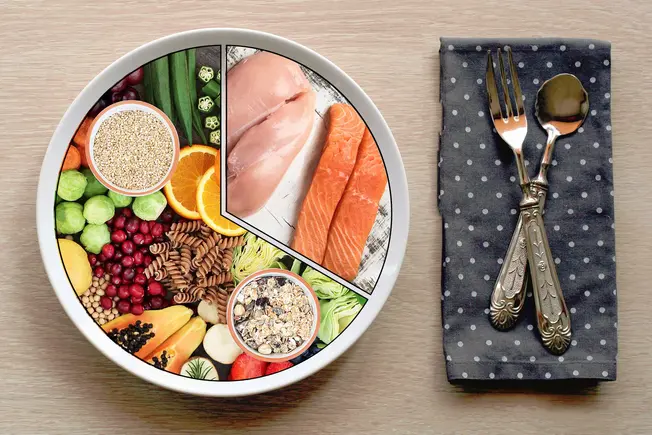
Balance Your Diet
1/13
Your food choices may help cut your odds of having breast cancer, though scientists are doing more research to learn how diet affects the disease. Focus on vegetables, fruits, beans, and whole grains, which should make up two-thirds of your plate. Reserve the other third for lean protein such as poultry or fish. More than 5 cups a day of plant-based fare is a good guideline.

Limit Alcohol
2/13
If you’re a woman who has two or three servings a day of wine, beer, or liquor, your risk is 20% higher than one who doesn’t drink at all. Experts say if you want to imbibe, have no more than one drink a day. That only slightly raises your chances of getting breast cancer.

Don’t Smoke
3/13
Tobacco use is linked to a higher risk of breast cancer, especially in younger women who haven’t gone through menopause. How much you smoke, the age when you started, and how long you continue all affect how likely you are to get the disease. If you’re a smoker, ask your health care provider about ways to help you quit.

Know Your Tissue Type
4/13
The makeup of all breasts is different. If yours have less fatty flesh and more milk glands and supportive tissue, they’re called “dense.” That can raise your breast cancer risk and make abnormal cells harder to spot on scans. Mammograms are one way to measure your tissue type. If you have dense breasts, take other steps to lower your odds for breast cancer. You may need to get screened more often or use more advanced screening tests.

Get Your Workouts In
5/13
Regular physical activity can lower your breast cancer risk. Experts say you should get either 150 minutes of moderate exercise or 75 minutes of harder, vigorous workouts over the course of a week. You can also do a bit of both.

Watch the Scale
6/13
When you eat a balanced diet and exercise, that can help you stay at a healthy weight, which also lowers your chance of breast cancer. Extra pounds, particularly if you put them on as an adult, are linked to a higher risk of the disease. That’s especially true for women who have been through menopause.
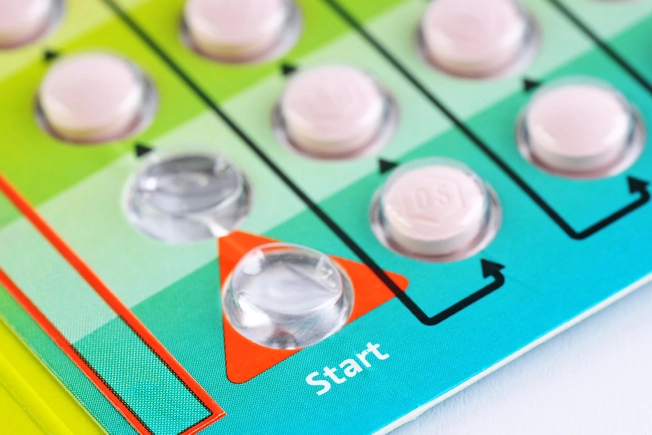
Consider Your Birth Control
7/13
Hormonal forms of contraception — such as pills and some IUDs — are linked to a slightly higher chance of breast cancer. But they can also protect you against other types of tumors. Your doctor can help you think about how the things that raise your odds of having breast cancer compare with the reliability and health benefits of different types of birth control and decide what’s best for you.
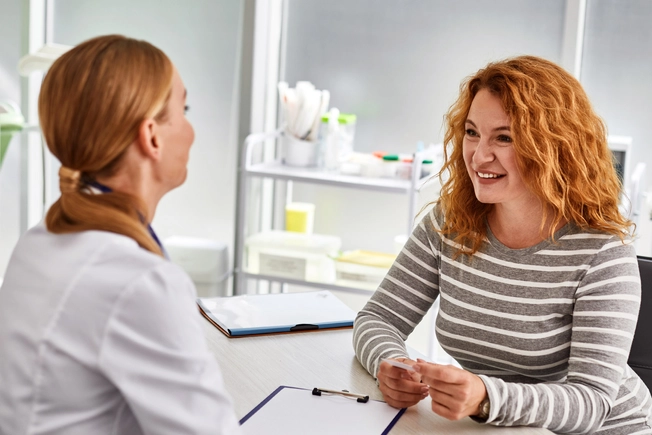
What About HRT?
8/13
Some women take hormone replacement therapy to ease menopause symptoms or prevent bone fractures. But your risk of breast cancer rises when you take the combination type (estrogen and progesterone) or if you take the estrogen-only type for many years. If menopause seriously affects you, talk to your doctor about your options. If you decide to take this medication, you’ll want the lowest effective dose for the shortest amount of time.
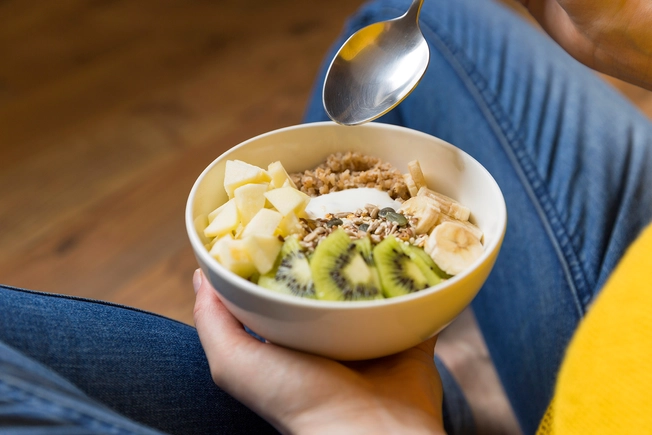
Make Sure You Get Fiber
9/13
You can find this nutrient in whole grains, vegetables, fruits, and beans. Women who eat plenty of these foods had a lower risk of breast cancer, according to several studies. Scientists aren’t exactly sure how it works to prevent tumors, but they’re doing more research to understand why. A fiber-rich diet can also help your health in other ways, like lowering your odds of diabetes and heart disease.

Keep It Dark
10/13
Women exposed to a lot of light at night — whether because they do shift work or they live in well-lit areas — may have a higher risk of breast cancer. Researchers think the link is a hormone called melatonin, which your body makes when darkness falls so that you’ll feel sleepy. If you can, try to control how much light you’re around at night. Tools like blackout shades, a sleeping mask, and low-watt bulbs in your bathroom can help.

Do You Get Vitamin D?
11/13
Your body makes its own vitamin D when sunlight hits your skin. But a more reliable way to get enough is through foods like salmon, oysters, sardines, and fortified foods like milk and orange juice. When you don’t get enough of this nutrient, your risk of breast cancer may go up. You can also get it in supplement form, but talk to your doctor before you take it.

Check Your Toiletries
12/13
Many cosmetics, lotions, and hair products have parabens, which can act like a weak estrogen in your body. Some scientists think these chemicals might be able to trigger hormone-positive breast cancer, but the research is far from clear. If you’re worried about the risk, you can buy items made without this substance.

Be Informed
13/13
There’s a lot of misinformation about breast cancer out there. To address some common myths: A mammogram is an important screening tool, and it will not cause a tumor to spread. You will not raise your risk if you shave your underarms or use antiperspirant. Wearing a bra — underwire or other types — does not affect your odds.
Can titanium dioxide cause cancer?

- Can titanium dioxide cause cancer?
Robust, scientific evidence shows that titanium dioxide is safe. Here’s what you need to know.
Titanium dioxide is a bright white pigment used across many different industries due to its unique and useful qualities. It is mostly used in everyday products such as paints, plastics, paper and inks.
Current scientific evidence shows it is safe to use products containing titanium dioxide:
- Decades of industry and independent research has found no evidence of potential cancer risk to humans from titanium dioxide.
- Studies that have linked titanium dioxide to cancer risk are based on an excessive lung overload effect observed in rats, involving exposure to very high quantities of titanium dioxide by inhalation. The extreme doses used in scientific studies with rats do not reflect normal conditions of use or exposure, and there is no evidence of potential cancer risk to workers who may be exposed to TiO2 on a daily basis.
Introduction
Titanium dioxide is a well-established and omnipresent natural substance. Titanium dioxide – also known by its chemical name TiO2 – has been assessed for safety by a large number of regulatory authorities and has consistently been found to be safe for a broad variety of all applications.
There have been recent discussions about whether it may be harmful to humans or even cause cancer. Here are the main questions and the key facts.
Titanium dioxide has been classified as a category 2 carcinogen by inhalation by the EU. What does this mean?
In 2020, the EU classified titanium dioxide in its powder form as a suspected carcinogen by inhalation under the EU’s Classification and Labelling (CLP) Regulation.
There is no scientific evidence of cancer in humans from exposure to titanium dioxide. The classification is based on one rat inhalation study which was conducted in excessive overload conditions. The TDMA believe this study is not an acceptable scientific basis for the classification and a thorough weight of evidence assessment confirms that TiO2 does not induce cancer and does not have an intrinsic property to cause cancer.
The EU authorities have underlined in the classification that the suspected hazard could occur if dust is inhaled in extremely high concentrations over a long period of time.
So, why did the EU classify titanium dioxide? And what does the classification mean for consumers? Here is what you need to know.
Why did IARC assess titanium dioxide as “possibly carcinogenic” by inhalation?
In 2006, the International Agency for Research on Cancer (IARC) concluded that there was inadequate evidence to state that titanium dioxide causes cancer in humans.
IARC did conclude, however, that titanium dioxide is “possibly carcinogenic to humans by means of inhalation” (category 2b). It found inadequate evidence in humans but sufficient evidence of cancer risk in animals.
The IARC assessment is based on three rat studies carried out more than 20 years ago, under conditions that are not aligned with the EU’s current testing guidelines.
Furthermore, it is generally recognised that rats are uniquely sensitive to the effects of “lung overload”, a condition that is not observed in humans.
IARC’s findings did not trigger any other regulatory action in Europe.
Why did the EU classify titanium dioxide as a possible carcinogen by inhalation more than 10 years later?
After a proposal by the French Authorities in 2016, the Committee for Risk Assessment (RAC) of the European Chemicals Agency (ECHA) concluded in June 2017 that TiO2 met the criteria to be classified as a substance suspected of causing cancer (category 2) if inhaled.
The opinion of the RAC is clear in stating that there are no robust carcinogenicity studies in species other than rats, and that the relevance of this data for humans is unclear. Moreover, the RAC’s opinion does not consider data for more than 24,000 workers, that demonstrates there is no link between cancer in humans and exposure to titanium dioxide.
The RAC found that the suspected hazard described for TiO2 is not specific to the substance but common to all dusts/powders known as ‘poorly soluble low-toxicity substances’.
The suspected hazard is linked to the form of these particles which when inhaled in a very high concentration over a long period of time can overwhelm the lungs in a rat, the so-called ‘lung overload’ condition. This might result in the carcinogenic effect which has been observed in rats, but not other species or in humans.
The EU’s decision to classify titanium dioxide as a possible carcinogen by inhalation is not based on any new scientific evidence, but rather reflects an extra precautionary approach to the well-known hazard of breathing too much dust.
Are there any risks for consumers?
The RAC underlined that it does not “take into account the likelihood of exposure to the substance and therefore does not address the risks of exposure.”In other words, the opinion of the RAC does not concern whether the hazard described will ever occur in the real world.
However, studies on the toxicology of substances should also consider the principle of dosage, often referred to by the phrase: ‘The dose makes the poison.’ All chemicals – even water and oxygen – can be toxic to humans if consumed at high or extremely high doses.
Many animal studies on substances test the effects of a substance at high doses, which are not found in real-world situations. This is the case for titanium dioxide. If the extreme inhalation conditions specified in the classification are removed, titanium dioxide is not harmful. The specific effects on animals may also not be replicated in humans, as in the case of the ‘lung overload’ observed in rats.
This was reaffirmed at a meeting between the European Commission, Member States and interested parties. It was concluded that there are “negligible” concerns for consumers given the extremely high level of exposure of inhalable titanium dioxide particles required for the substance to be harmful in any way. Such conditions were considered unrealistic by the authorities under normal and foreseeable circumstances.
What does the classification of titanium dioxide mean for consumers?
The classification adopted by the European Commission is clear that the suspected hazard is limited to TiO2 powders, if inhaled over a very long period at very high concentrations.
This means that the classification is of very limited relevance to consumers. In most products, TiO2 is incorporated in the finished product and there is almost no risk of inhaling it. Likewise, the TiO2 in finished products such as paints and plastics is either insoluble or solid and cannot be inhaled.
Yet, the classification means that some products may need to carry labels or statements warning about dust even if it is unrealistic that consumers will be exposed to the hazard at all, let alone to a harmful level. In other products, like cosmetics and toys, there may be reassessment to reaffirm the safety of TiO2.
In summary:
- The EU classification is not based on new information or hazard;
- The suspected hazard will not occur in real-world conditions under realistic circumstances;
- The safety of titanium dioxide for humans remains underpinned by decades of data.
2/ Is titanium dioxide safe to eat?
Yes – E171, the food grade of titanium dioxide, has gone through rigorous European testing and classification, which proved that titanium dioxide has not been found to persist or accumulate in the human body.
Numerous studies have consistently confirmed the safety of E171.
What researchers and authorities have said about E171’s safety
In 2015, a group of researchers from the Food and Environment Research Agency in the UK, the Food Institute at the Tübitak Marmara Research Center in Turkey and the RIKILT Institute of Food Safety in the Netherlands carried out a study into the oral consumption of nano and larger particles of titanium dioxide.
Their research found that there would be no “significant internal exposure of the consumer to the nanoparticles”.
In 2016, while reviewing food additives that had been approved prior to 2009, the European Food Safety Authority (EFSA) reviewed the latest information about E171. It found that the data on E171 showed no health concerns for consumers. The safety of E171 is not influenced by the particle size because it is not absorbed into the human body.
Why did France decide to suspend the use of E171?
The French decision is mostly based on a study in 2017 by the National Agronomic Research Institute (INRA). However, the findings of this study cannot be extrapolated to humans and were not corroborated by other similar research.
In 2017, a study was published by the French National Agronomic Institute (INRA), claiming risks of cancer from ingestion of titanium dioxide observed in rats. However, much like inhalation studies, the protocol used in this research cannot be extrapolated to conclude that it could cause cancer in humans.
In fact, INRA itself clearly states that its findings cannot be extended to draw conclusions for human health, and that they do not comply with OECD guidelines for the testing of chemicals. Other studies carried out in conformity with OECD guidelines have not shown any adverse effect at doses considerably higher than those used in the INRA study.
EFSA itself was asked to review the findings of the INRA study in 2018 and concluded that the results of the INRA study do not warrant a revision of the safety approval of E171. In 2019, the Michigan State University and University of Nebraska Medical Center looked into concerns raised by the INRA study. While using higher doses than INRA, they did not observe any statistically significant changes associated with ingestion of E171 in any immune parameters or cancer in the gastrointestinal tract.
The former European Commissioner for Health & Food Safety, Vytenis Andriukaitis, reiterated this on 20 February 2019 and underlined that the use of titanium dioxide as an additive is not of safety concern. The Commissioner also reasserted EFSA’s conclusion that the oral absorption of TiO2 is extremely low and independent of particle size.
In summary:
- The French suspension of E171 is not based on new information;
- The European Food Safety Authority has consistently confirmed the safety of E171
Ways to Fight the Aging Process

Little Aches and Pains
1/12
Whether it’s an old injury that keeps flaring up or the start of arthritis, you’re more likely to feel a few aches more often as you age. Regular movement can ease pain and make your joints more flexible. Try low-impact exercises like swimming, yoga, and tai-chi. Heating pads or ice packs can help, too. If those don’t give you enough relief, talk to your doctor about over-the-counter or prescription medicines, like nonsteroidal anti-inflammatory drugs (NSAIDs).
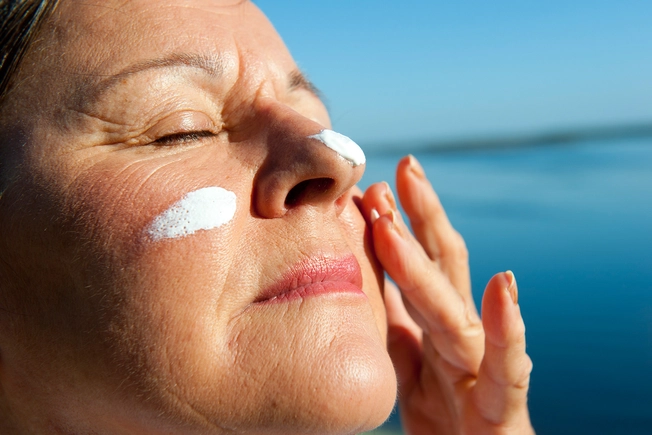
Wrinkles
2/12
These show up as your skin gets thinner, drier, and less elastic. But some things can make them worse, like smoking and ultraviolet rays from the sun or a tanning bed. To ease these signs of aging, protect your skin from the sun, and if you smoke, quit. Some skin products, like moisturizers or prescription retinoids, might make wrinkles less noticeable. But you’ll need to give them time to work — most need 6 weeks to 3 months to show results. A dermatologist can help you know what would work best for you.
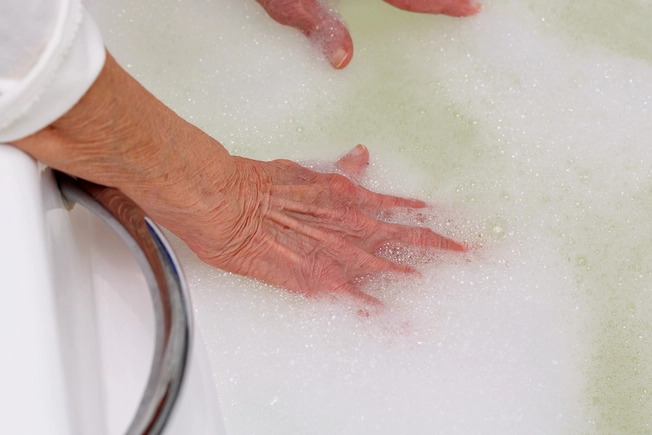
Dry Skin
3/12
Sun protection and quitting smoking will help this problem, too. So will watching how much alcohol you drink — it can dehydrate you. It’s a good idea to keep showers or baths to less than 10 minutes and to use warm water instead of hot. Then put a heavy, oil-based moisturizer all over your body right away.

Loss of Muscle
4/12
Many people lose strength and endurance as they get older, but the reason isn’t really about the aging process. Many people just stop working key muscles. The phrase “use it or lose it” applies here, so see if you can start weight training to build up your strength. Regular exercise, like walking, gardening, or swimming, can help, too. Aim for at least 30 minutes a day — you can split it into two 15-minute sessions if that works better for you.

Sleep Changes
5/12
Your need for shut-eye doesn’t change as you age, but your ability to get it can. Older people tend to have a harder time falling asleep, have shorter stretches of deep sleep, and wake up more often in the middle of the night. Coffee and alcohol can cause those issues, so cutting back on those can help. And it’s important to keep health conditions that can affect your sleep, like high blood pressure or GERD, under control. Talk with your doctor if you often have trouble sleeping.

Memory Glitches
6/12
They might feel alarming, but they’re part of the normal aging process. Your brain changes as you get older, which can affect how well you remember things. You may need to lean on a few tricks, like keeping lists, following a routine, and putting items in a set place. But some habits also help you keep your memory sharp. For example, being around friends and family often has been shown to boost your brain power. Regular exercise and eating healthy foods are key, too.

Weight Gain
7/12
As you get older, you don’t burn calories like you used to. But you can counter that slower metabolism by being more active and watching what and how much you eat. Make fruits, vegetables, and leaner protein key parts of your diet. Also, limit sugar and foods that are high in saturated fat. And keep an eye on portion sizes.

Changes in Your Sex Life
8/12
Erectile dysfunction, vaginal dryness, and other conditions that become more likely with age can make sex a challenge. Talk with your partner about how you’re feeling and if you want to try different ways to be intimate. Over-the-counter products like vaginal lubricants can help some issues. You can also ask your doctor if there are medications you should try. But keeping yourself healthy overall will help, too. Exercise boosts blood flow and sex hormones, and it helps you feel good about yourself.

Peeing More Often
9/12
Your bladder and pelvic muscles get weaker with age. Other health problems, like an enlarged prostate, can make the issue worse. Strengthen the area with Kegel exercises — squeeze your muscles as if you’re trying to hold in urine — 10 to 15 times, three times a day. Your diet makes a difference, too. Get plenty of fiber, and limit sugary, carbonated drinks and caffeine. If you’re having trouble with holding urine, leaking, a sudden, urgent need to pee, or pain when you go, see your doctor.

Being in a Rut
10/12
It’s easy to get bored if you fall into a predictable routine, especially if it doesn’t change much for years. To shake things up and keep your mind engaged, try breaking out of your daily schedule. Take some time to do something you like or learn a new skill. If you’re retired, you might think about getting a part-time job or some temporary work. It can boost your mental health and your bottom line at the same time.
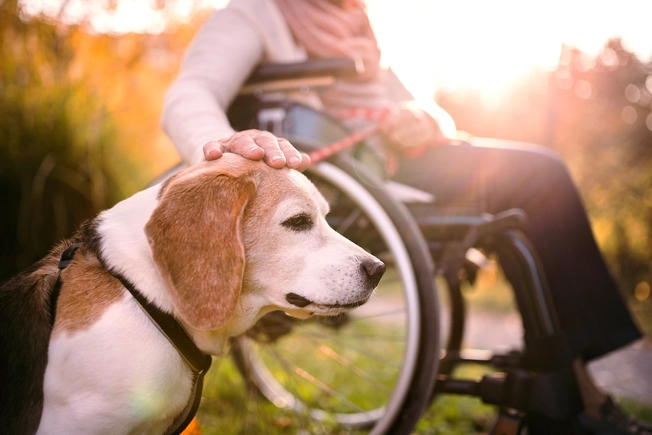
Feeling Lonely
11/12
Whether your kids move out or you retire from your job, you may spend more time around fewer people as you age. To avoid feeling isolated, make it part of your daily routine to talk with friends, family, and neighbors. Volunteer for a charity or a faith-based group. Simply writing a letter can give your social life a boost. A pet can be good for companionship, too — a daily dog walk is good exercise and a chance to meet people.

Stay on Top of Your Health
12/12
Most older adults have at least one health problem, like heart disease or diabetes. If you do, it’s important to go for regular checkups, keep your prescriptions filled, and follow all your doctor’s instructions. Checkups are key even if you don’t have a health condition so you can spot any issues early and get tips for staying healthy.
Breathe Better at Home

Outside Air
1/14
Most home heating and cooling systems simply recirculate the air that’s already in the house, including all the dust, dirt, and pollen. When the weather’s nice and pollen counts are low, open windows and doors to freshen things up. This is especially important if there are fumes from painting, cooking, kerosene heaters, or hobbies like woodworking.
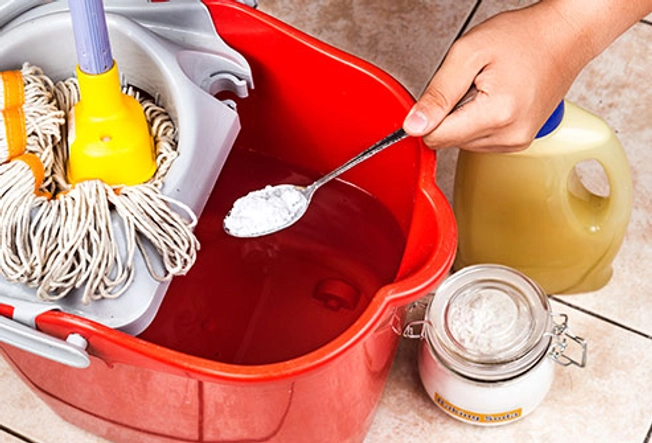
Simple Cleaning Products
2/14
Some cleaners have harsh chemicals that can cause breathing problems or trigger an allergy or asthma attack. Read labels carefully and stay away from ones that have volatile organic compounds (VOCs), fragrances, or flammable ingredients. You can make your own cleaners with plain soap and water, vinegar, or baking soda.

Your HVAC
3/14
A dirty filter on your heating and air conditioning unit can keep air from flowing the way it should and lead to mold growth if it gets damp. Change it at least every 3 months and make sure it fits well. If you have asthma or allergies — or you have pets or a large family — you might want to check it once a month. It’s also a good idea for a professional to inspect the unit once a year.

Bathrooms
4/14
If there’s mold in your house, the tiny spores can float into your nose and even your lungs. That can lead to allergy symptoms, like coughing or sneezing, or other breathing issues. The fungus loves damp areas, so keep bathrooms dry. Turn on a fan or open a window to help move air after you shower, and hang up wet towels and washcloths. If you see mold in the tub or other areas, you may need to clean more often to help keep it at bay.

Air Fresheners
5/14
Even pleasant smells can cause problems. Some air fresheners have VOCs in them that may bother your nose and throat. Other aerosol sprays, including some health and beauty products, have VOCs, too.

Fresh Fruits and Vegetables
6/14
If you keep them too long, mold can grow on them. Check stored fruits and vegetables often, and toss anything that has mold or slime on it. To keep them fresh longer, don’t wash them before you store them — do that just before you eat them. If you’re not sure if something is fresh, throw it away.
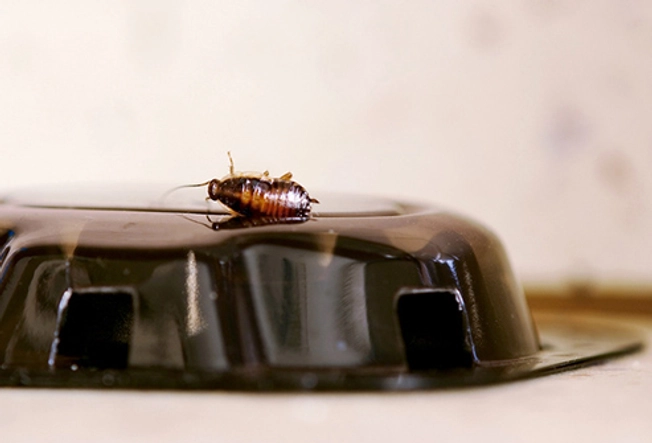
Cockroaches
7/14
These bugs can cause problems even after they’re dead. When they die, their bodies break down into small bits, and those can get into the air. The same can happen with their poop. Those bits can get into sheets, pillows, and other fabrics, and may trigger asthma attacks or allergic reactions. If you know you have a roach problem, use roach baits instead of sprays.

Leaks
8/14
These can happen with sinks, toilets, showers, dishwashers, or refrigerators — even your roof. Pooled water can lead to issues with mold and cockroaches, so any leak needs to be taken care of quickly. Call a plumber if you can’t find where it’s coming from or don’t know how to fix it.

Leftovers
9/14
The only thing cockroaches like more than water is food. When dinner’s over, put anything that’s left in airtight containers. And if you throw food away, make sure it’s into a trash can that has a lid on it.

Pets
10/14
Dander and other allergens that Fido and Fluffy bring in from outside can cause trouble for your lungs. As hard as it might be, it’s a good idea to keep them out of bedrooms and off beds. If that’s not an option, bathe them regularly and vacuum the areas where they spend time.
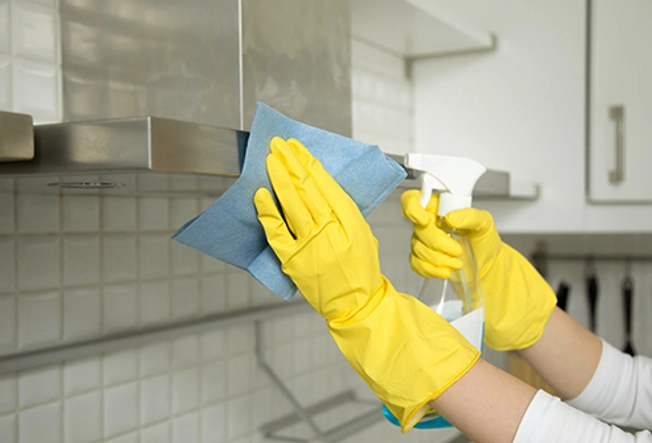
Forgotten Areas
11/14
Cabinet tops and vent hoods are a couple of places people sometimes forget to clean, along with behind toilets and under bathroom sinks. Wipe them down every so often with warm, soapy water. Give your pets’ dishes a daily wash, too, and check around for other areas that might collect grease, food, grime, or water.

Linens and Rugs
12/14
Wash sheets, pillowcases, blankets, and area rugs once a week in 130-degree F water to help get rid of dust, mold, mites, and other things that can affect your breathing. And get rid of throw pillows that don’t have zip-off covers. They collect dust mites and pet dander and can be hard to clean.

Furniture
13/14
Fabrics can trap dust, pollen, and other allergens. The next time you give the living room a new look, consider leather or vinyl furniture instead of cloth. If you have issues with allergies or asthma, you also might want to hang blinds instead of curtains, and dust them regularly.
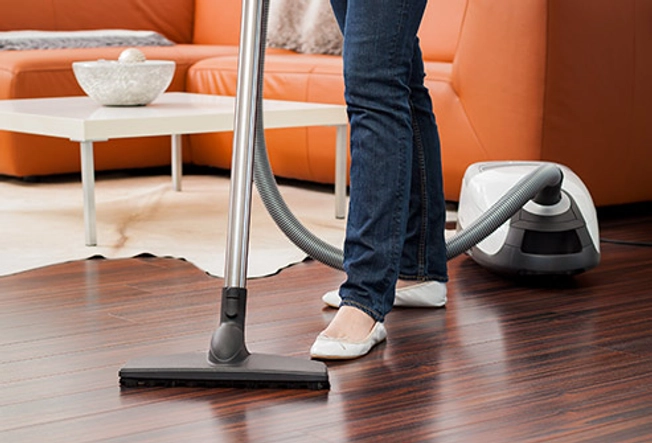
Flooring
14/14
Hard surfaces, like wood, don’t collect things that affect your breathing the way carpet can. If you need some soft areas, use throw rugs you can clean in a washing machine or sink. If you can’t take up your carpet, vacuum it weekly with a cleaner that has a HEPA or small-particle filter. When it needs to be professionally cleaned, be sure to use a certified “asthma & allergy friendly” service.
Ancient Spice Saffron Works as Well as Ritalin for ADHD

While powerful stimulant medications remain the standard treatment for attention deficit hyperactivity disorder (ADHD), the spice saffron has been found to offer comparable efficacy — with the added benefit of better sleep
A groundbreaking study published in the journal Nutrients found a botanical extract of the ancient spice saffron works as well as methylphenidate (brand names Ritalin and Concerta) to treat attention deficit hyperactivity disorder (ADHD) in children and adolescents.[i]
In the U.S., millions of children have been diagnosed with ADHD, including 3.3 million 12- to 17-year-olds, 2.4 million 6- to 11-year-olds and even 265,000 3- to 5-year-olds.[ii] The percentage of those taking powerful medications as a result varies by state, but ranges from 38% to 81% of those diagnosed.[iii] Overall, however, it’s estimated that 62% of children with ADHD take ADHD medications.
Side effects from these drugs can be steep and include weight loss, difficulty sleeping and anxiety, along with a rebound effect, in which fatigue, poor mood or increased activity occur as the medication wears off. Other side effects include tics, growth delays, stomach problems and changes in blood pressure and heart rate.[iv]
As noted by the study authors, while psychostimulants remain a go-to treatment for ADHD, “parents tend to be reluctant to administer them due to side effects, and alternatives are needed.”[v] Saffron, it turns out, may provide one valuable option.
Efficacy of Saffron for ADHD ‘Comparable’ to Ritalin
The study involved children and adolescents with ADHD, aged 7 to 17 years. Group 1 received psychoeducation and extended-release methylphenidate while group 2 received psychoeducation and saffron at a dosage of 30 milligrams (mg) a day for three months.
Interestingly, while those taking methylphenidate, which can cause sleep disturbances, took the dose in the morning, those taking saffron consumed it in the evening due to “the well-known properties of saffron in improving sleep quality, latency, and duration.”[vi]
Both treatments led to statistically significant improvements in core ADHD symptoms and executive functions, which include inhibition, working memory, multitasking and the ability to monitor one’s own actions.
The improvements were “comparable in terms of efficacy, measured with both pen-and-paper tests filled out by parents, and objective measures.” While no significant side effects were reported in either group, those taking saffron enjoyed an additional benefit of better sleep.
According to the study, “A pronounced difference was found in the saffron arm, in the sense that the parents of the children treated with saffron reported a pronounced improvement in the time to fall asleep.”[vii]What’s more, the study found saffron tended to be more effective than methylphenidate for treating hyperactivity.
Saffron’s Psychoactive Properties
Saffron is the dried stigmas from saffron crocus (crocus sativus). Well-known for its anti-inflammatory and antioxidant properties, it’s been used as a remedy for chronic diseases including rheumatoid arthritis, inflammatory bowel diseases, Alzheimer’s disease and cancers of the colon, stomach, breast, lung and skin.[viii]
In addition to showing promise for modulating high blood pressure and improving lipid profile, saffron compounds such as crocin, picrocrocin and safranal appear to have protective effects on the central nervous system, along with psychoactive properties. Crocetin, for instance, is known to penetrate the blood-brain barrier to reach the central nervous system, leading researchers to suggest it can be effective for neurodegenerative disorders.[ix]
Further, saffron has antidepressant and antianxiety properties, which researchers suggest are “similar to those of current antidepressant medications such as fluoxetine, imipramine and citalopram, but with fewer reported side effects.”[x] Saffron affects NMDA and GABA receptors in the brain, leading to the secretion of dopamine, serotonin and noradrenaline. According to the Nutrients study authors:[xi]
“Given that, first, both dopamine and noradrenaline are the core neurotransmitters associated with ADHD, and second, saffron extract is a safe, natural substance, thus alleviating parental fears regarding the stimulant-drug based treatment of ADHD, it seems plausible to test whether saffron has some potential to treat ADHD.”
At GreenMedInfo.com, you can find 141 diseases that saffron may benefit, which include not only depression, anxiety and Alzheimer’s disease but also Type 2 diabetes, erectile dysfunction and macular degeneration, among others.
Saffron Has Previously Shown Promise for ADHD Relief
The Nutrients study was non-randomized, meaning participants were able to choose which treatment group — saffron or methylphenidate — they wanted to be in. This increases the risk of selection bias, which is one of the study’s limitations. However, this isn’t the first time saffron has been highlighted for ADHD treatment. In 2019, a six-week randomized double-blind study found similar benefits for saffron on ADHD.[xii]
The participants were randomly assigned to receive either 20 to 30 mg of saffron or 20 to 30 mg of methylphenidate (depending on weight) per day. Both treatments worked equally well, suggesting saffron was as effective as Ritalin for ADHD. “This study provides evidence for satisfactory outcomes with saffron in treatment of ADHD,” the researchers noted, adding that saffron contains nearly 150 different components.
In addition to offering benefits for ADHD, saffron has at least 75 known pharmacological actions, including antitumor properties and radical scavenging capabilities. Saffron may be useful for enhancing learning, memory and sexual activity, while offering benefits for schizophrenia and Parkinson’s disease, along with anticonvulsant effects.[xiii]
At GreenMedInfo.com, you can also explore other natural remedies for ADHD. Beyond saffron, a dozen other substances also show promise for symptom relief, including omega-3 fats, magnesium, bacopa and cannabis. Therapeutic actions, like exercise, mindfulness training and dietary modifications, are also explored at our ADHD research page.
The good news for those suffering with difficulty concentrating, mood swings, short attention span and other ADHD symptoms is that help is out there — and it doesn’t have to involve stimulant medications with side effects that may be worse than the condition they’re treating. Herbs like saffron — valued for its medicinal properties for more than 4,000 years — deserve a closer look for their potential to help ADHD and other modern-day ailments.
6 Evidence-Based Ways to Burn Belly Fat & Extend Your Life

The ongoing battle of the bulge, while once considered primarily a matter of vanity, may actually be one of the best ways to reduce your risk of dying from a multitude of causes (i.e. all-cause mortality), but especially heart attack.[1]
Some studies have even revealed that abdominal obesity, known clinically as central obesity, and which is measured by the hip-to-waist ratio, may be more important than blood lipids, i.e. “cholesterol,” and being an active smoker, in determining your risk of heart attack. [2]
So, with this in mind, the following 6 “diet tips,” take on even greater relevance to your overall health.

1. Coconut Oil – Two human clinical studies now exist showing that dietary coconut is safe and effective in reducing midsection fat in both women and men. In the women’s study, the treatment group received two tablespoons of coconut oil (30 ml), daily, over a period of 12 weeks, resulting in both a reduction in waist circumference, as well as a boost in their “good” HDL cholesterol levels. [3] In the male study, obese men received two tablespoons (30 ml) of coconut oil per day, taken in 3 divided doses, half an hour before each meal, for one month. The men experienced an average of over one inch (2.86 cm) reduction in their waist circumference, with no adverse changes in their blood lipids. You can read the full study here.

2. Green Tea – Green tea has been called “the medicine which grew into a beverage.” Indeed, our project has identified research on over 200 health conditions that may benefit from its use, with obesity on top of the list.[4] In a 2009 study published in the journal Obesity, the consumption of catechin-rich green tea was found to be safe and effective in reducing weight in moderately overweight subjects, including an over two inch reduction in their waist circumference.[5]
.jpg)
3. Sunlight – A 2011 study in The Journal of Investigative Dermatology revealed a remarkable fact of metabolism: The exposure of human skin to UV light results in increased subcutaneous fat metabolism. While subcutaneous fat, unlike visceral fat, is not considered a risk factor for cardiovascular disease, it is known that a deficiency of one of sunlight’s best known beneficial byproducts, vitamin D, is associated with greater visceral fat.[6] Also, there is a solid body of research showing that vitamin D deficiency is linked to obesity, with 9 such studies on our obesity research page. One of them, titled “Association of plasma vitamin D levels with adiposity in Hispanic and African Americans,” and which was published in the journal Anticancer Research in 2005, found that vitamin D levels were inversely associated with adiposity in Hispanics and African-Americans, including abdominal obesity.[7] The point? Exposure to UVB radiation, which is most abundant two hours on either side of solar noon and responsible for producing vitamin D, may be an essential strategy in burning midsection fat, the natural way.

4. Soy Protein – While soy has become a punching bag of sorts, for rightful (GMO/non-organic/over-consumption/exclusively non-fermented) and wrongful reasons (disregarding the positive soy research), it does seem to have value as a medicinal food in addressing subcutaneous and total abdominal fat in postmenopausal women, likely because it does have hormone-modulating properties. [8] And for those who have now become convinced that soy’s phytoestrogenic properties are a breast cancer risk, we encourage you to look at the 12 studies on our breast cancer page, indicating quite oppositely that it has potent protective effects against breast cancer initiation and recurrence. Certainly it’s not a one, or even two-dimensional issue, but it is important that we don’t shut down discussion altogether on the potential value of soy, or any food, for our health – at least not until we have familiarized ourselves with the depth of research extant on the topic.

5. Dietary Challenges – While there are likely hundreds of other chemicals that may contribute to midsection weight gain, the 3 main problematic substances we have identified are (industrially produced) Fructose, Bisphenol A and MSG. You can view the first-hand studies we have collected on the topic under the “Problem Substances” Quick Summary on our Abdominal Obesity Research page. Additionally, a study published in 2011 and published in the journal of Clinical Nutrition showed that weight cycling, i.e. the yo-yo diet, is associated with body weight excess and abdominal fat accumulation.[9]

6. Exercise – This one is obvious to many, but it doesn’t hurt to be reminded that there is more to midsection weight loss than what you do and do not eat. In other words, move it, and you lose it. One of the best ways to accelerate the reduction of belly fat through exercising is through increasing the intensity of your work outs. A 2008 study in the journal of Medical & Science in Sports & Exercise showed that body composition changes are affected by the intensity of exercise training with high-intensity training (HIET) being most effective for total abdominal fat, subcutaneous fat, and abdominal visceral fat loss, at least in obese women with metabolic syndrome. [10] There is also research that green tea catechin consumption enhances exercise-induced abdominal fat loss, as well as soluble fiber intake.
The Real Benefits of Lemon Water According to Science

Article originally published on www.rootandsprouts.com
Most of us have seen the Top 10 lists of why we should be drinking lemon water. But do we really know the added vitality and cleansing effects on the body lemon water provides?
Lemon water sounds like a good idea, and you’ve probably seen pictures on Pinterest of large pitchers of water with vibrant lemons and the top 10 reasons why you should be drinking it.
It’s easy to take these images and lists at face value, and most won’t end up actually drinking lemon water regularly, rather be able tell their friends the top 10 reasons lemon water is good for you.
We’re interested in the part that adds vitality and incredible cleansing effects on the body. If you’re just getting started on a path of feeling better through diet change then making a replacement of lemon water for a morning coffee is a great first step. I truly believe that we have the power to heal our bodies by adapting what we consume every day. Our challenge is to:
- Look through the top benefits we’ve listed below and find the one benefit that will motivate you to start incorporating lemon water into your daily life.
- Commit to 14 days of lemon water
- Write down how you feel on day 1, then on day 14
- Let us know what you experienced.
What We Know About Lemons
Botanically, it is a citrus fruit in the Rutaceae family (scientifically known as Citrus Limon), and while being the smallest in its family has more comprehensive health benefits than its family members (1).
They are likely to have originated in India around the Himalayan foothills and spread from there. The two main types of lemons are the Lisbon and Eureka. There are other’s that have come into vogue such as the sweeter Meyer Lemons.
The fruit is lower in calories about 29 per 100 grams, which makes it one of the lower in its family.
Lemons as a Source of Vitamin-C
We know lemons are high in vitamin C which is essential for normal growth and development (2). A single lemon contains around 30-40 mg of vitamin C (3) (in comparison an orange contains around 80-90 mg of vitamin C).
Vitamin C has been studied extensively and shown to have a myriad of health benefits from protecting against prenatal problems, cardiovascular disease, eye diseases, skin wrinkles, and immune system deficiencies (4).
It acts as an antioxidant and helps protect cells from damage caused by free radicals (5).
If you’d like to go down the rabbit hole of vitamin c start with this fact sheet, as we’ll be focusing on some of the more unique properties of lemon water.
Unique Health Benefits of Lemons
1. Lemon Water as Detox and Cleanse
This is the first benefit that comes to mind when it comes to lemon water, and usually the most overstated. We’ve cited a few scientific sources that give true insight on the potential for lemon water as a natural detox.
Not surprisingly, the amount of urine is increased when drinking lemon water however lemon water brings with it the primary compound known as Citrate.
This is a naturally-occurring inhibitor of toxins (which can build up in the form of crystals in the body). The Citric acid enhances your body’s ability to naturally flush out these unwanted toxins.
Toxins come into our systems through various sources from the air we breathe to some of the foods we eat. Two of the more well known studies shed some light on the use of lemon as a cleanse:
- As published by Dutch researchers in a 2002 edition of the European Journal of Nutrition, lemon peels and the waste stream of the lemon peels are effective in lowering blood and liver cholesterol levels. Although performed on animal subjects, these results insinuate that lemon peel consumption could be beneficial to those with fatty liver disease.
- As published by Indian researchers in a 2005 edition of BMC Pharmacology, hesperidin (a citrus bioflavonoid found in lemons) demonstrates the ability to protect the liver from damage. After administration of CCl4 (a well known liver toxin), the authors concluded that hesperidin demonstrates a protective effect on the liver (6).
Our liver is where we filter everything we consume and neutralize many toxins. We’ve covered the various methods of cleansing with related products like apple cider vinegar.
These studies shed light on the lemon’s ability to enhance the liver’s function of filtering out unwanted toxins.
The main premise behind lemon water as a detox revolves around its ability to enhance your bodies enzyme function and stimulate the liver.
Studies indicate that in cases where toxins have built up in the body, the lemon juice and peel have cleansing properties. Using lemon water, especially after meals may help you lower the amount of toxins in your body.
2. Improve Digestion with Lemon Water
Citrus flavonoids are the primary cause of improved digestion when drinking warm lemon water. They aid in the assimilation of food, help prevent fatty liver, decrease chances of cardiovascular disease, fat-lowering, and reduced insulin sensitivity. This has to do with it’s ability to inhibit certain synthesis of fat in the body (7).
Citrus flavonoids act as a great digestive tonic, with appetite suppressing abilities (8). It has also been shown to calm an upset stomach or mild indigestion. This has to do with the hydrochloric acid in your stomach that start the process of breaking down your food. It is believed the citrus flavonoids in lemon water support the hydrochloric acid in the stomach in breaking down food (9).
The best way to utilize lemon water as a digestion aid is to also include the zest of the lemon which will improve the good bacteria in your gut.
3. Alkalize with Lemon Water
If you’re new to the concept of alkalinity, it’s the process of neutralizing acid in the body. The basic idea is your body has certain acids that can build up causing negative side effects such as acid reflux, upset stomach, acidosis, and beyond (10).
There are various ways to check the pH levels of your body to find out if you are too acidic.
An ideal range to fall between is 4.6-8.0 and can be tested with pH strips using saliva or urine (11).
If you plan to use lemon water or alkaline drinking water to manage your body’s acid levels we recommend speaking with your doctor first and identifying your pH levels.
If you identify a need to alkalize, then we recommend getting some home pH strips that will allow you to stay within the recommend ranges.
Lemon water is a safe and effective way to manage your pH levels and achieving healthy alkalinity may benefit in bone health, reduced muscle wasting, decrease chances of hypertension and strokes, improved cardiovascular health, and improved memory (12).
4. Weight loss/Appetite Suppressant
We’re approaching this claim with caution since any new health fad that becomes popular can get turned into a “fat burning miracle”.
There is a lack of scientific research that supports the claim of weight loss fully, however this doesn’t mean the claims are false, simply that additional research is needed (13).
One of the studies that does exist was not a human trial but did show significantly reduced weight gain when a diet high in fat was being consumed (14). Most people whether they want to admit it or not fall in the high fat diet category.
Pectin and polyphenols are the main substances found in lemons that have more research available showing weight loss and appetite suppressing qualities.
Pectin gives a feeling a fullness much like other soluble dietary fibers, that may help reduced caloric intake.
In one study these two substance increased fat metabolism, increased HDL (good) cholesterol & lowered LDL (bad) cholesterol and decreased the production of inflammation (15).
The main study was carried out by Drs. Sheau C. Chai, Shirin Hooshmand, Raz L. Saadat, and Bahram Arjmandi, of Florida State University.
“It’s a Slow Process Don’t Make it Slower by Quitting.”
Every “body” will respond differently to lemon water, which is why we recommend adding this to your diet without any other major changes to isolate the effects.
This will allow you to better attribute any changes you experience and not be confused if it was the new multivitamin you started taking.
While additional research is needed regarding the weight loss benefits of lemon water, positive benefits are achieved by replacing sugary drinks for lemon water.
We recommend replacing your morning coffee with lemon water for at least 2 weeks. Keep a journal of your mood, energy, and cravings for the 2 weeks to see what positive benefits you experience.
5. Reduced Wrinkles and Improved Skin
This claim states benefits from both drinking lemon water and applying topically. Lemons have been found to be high in antioxidants (16) which are linked to anti-aging properties.
The primary cause of aging comes from free radicals that cause the breakdown of various tissues in the body, namely skin.
Research showed that plant derived antioxidants were able to reverse the breakdown of collagen fibers in the skin (17).
Collagen gives skin it’s strength, structure, and plumpness while protecting the skin from absorbing toxins (18).
Now the next time you see your friend with great skin you can tell her you’re jealous of her collagen.
Free radicals in small amounts are not damaging to the body, but you should be aware of practices that increase your exposure to free radicals.
The most common and most dangerous forms of exposure can come from drugs, radiation, pesticides, air pollutants, solvents, alcohol, tobacco smoke, pollution, and even foods we eat (19).
Most healthy people who do not smoke should not be overly concerned with too much free radicals in their system.
If you are concerned or curious you can take a urine test to get an idea of where you’re at (20).
If you want to apply lemon juice topically there are various ways depending on preference. The simplest way is to dilute in water and pat on the face with a damp cloth avoiding the eyes.
Other methods range from creating sugar scrubs to combining with Greek yogurt. In all cases the antioxidants in the lemon will be the active ingredient.
6. Benefits of Essential Oils in Lemons
Essential oils as a whole is a topic we will cover in greater detail since there is a lot of debate on their effectiveness, especially when you look at the claims.
There are however plenty of benefits that come from essential oil use, but we’ll stick to those that have been researched and tested.
At the time of this writing we found 14000+ articles that had essential oils being studied and researched (25), and lemon oil had over 500 alone.
If you’re looking to get the oils into your lemon water simply take the peel and squeeze or twist the outer zest portion.
If you watch closely you’ll be able to see the lemon oils coming out of the zest.
One of the most interesting benefits that has been linked to lemon oil is its moderate antimicrobial activities against bad bacteria, yeast and fungi such as Candida albicans more commonly known to cause yeast infection (26).
These antimicrobial effects have a range of benefits when ingested and used topically, and are the core of where the benefits are derived.
A study was published took a look at how lemon oil would affect pregnant women dealing with vomiting and nausea. Around 100 women participated and after just 2 days reports of dramatically decreased symptoms were reported as compared to the placebo group.
After 4 days a decrease of nausea and vomiting was seen on average of 33% (27).
While this study was specific to pregnant women, it may suggest that those dealing with similar issues who are not pregnant would see similar benefits.
In another study performed by the Central Food Technological Research Institute looked at how geraniol, a phytonutriant found in lemon, aided in reversing diabetic neuropathy.
The study showed that sciatic nerve damage was reduced through lemon oil (geraniol) use. In the full 8 week study cellular function was restored, suggesting that the use of lemon oil regularly can assist in regulating energy stores, and as previously mentioned help preventing disease (28).
Lemon oil is perhaps the most researched part of the lemon and also the part no one seems to include when making their lemon water.
Consider using the zest of the lemon in your drink or extracting the oils to include in your drink for maximum benefit.
Lemon Water Safety Measures
Safety measures for lemon water?!? I know what you’re thinking but there are a few things to keep in mind:
First off you really shouldn’t be eating the seeds of the lemon. A few here and there aren’t going to be terrible for you, but if you plan to drink lemon water regularly then make sure you’re avoiding the seeds.
They contain small amounts of salicylic acid which is the main ingredient in asprin, along with the bitter/astringent coating on the outside of the seed which gives it the bitter taste.
The easiest way I’ve found to get rid of them is to use a small strainer or a lemon press.
If you’re used to sweetening your tea or coffee then your taste buds are going to want a spike of sugar in your lemon water.
Try and avoid adding sweeteners other than raw honey as it will negate many of the benefits I mentioned.
If you can start to cut more and more sugar out of your diet, you will find your taste buds resetting and your cravings for sugar drop dramatically.
I had never experienced this until I cut out most of the sugars in my diet, but I can honestly say my cravings for sugary foods dropped dramatically.
Another common concern is what effects lemon juice has the enamel of your teeth. As long as you’re not using it like mouthwash your teeth will be safe.
With the amount of soda that people drink in our time, substituting lemon water will actually save your teeth. If you’re super concerned about it then try using a straw
Drinking lemon water is one of these little things that we can do on a regular basis that can have long term benefits.
The people who will the most dramatic effects in the beginning will be those who can replace a morning coffee or soda with lemon water.
As with any new addition to your diet, I recommend giving it a minimum of 2 weeks to see what positive benefits you’re getting.
We’re so used to instant gratification in almost everything we do, so when it comes to healthy diet and exercise it can be easy to get discouraged if we don’t see results in a few days.
Intrahepatic cholestasis of pregnancy
Key recommendations
- The diagnosis of intrahepatic cholestasis of pregnancy (ICP) should be considered in pregnant women who have itching in skin of normal appearance and raised peak random total bile acid concentration of 19 micromol/L or more. [Grade D]
- Additional laboratory and/or imaging investigations are not recommended unless itch is associated with atypical clinical symptoms, the presence of relevant comorbidities, or in early onset severe ICP. Consider additional postnatal investigations in women in whom resolution of abnormal liver function tests is delayed or does not occur. [Grade C]
- Consider discussing the care of women with severe, very early or atypical presentation of what appears to be ICP with a hepatologist. [Grade D]
- Confirm the diagnosis of ICP in the postnatal period at least 4 weeks after birth, with resolution of itching and liver function tests returning to normal (including bile acids). [Grade D]
- Advise women with isolated ICP and a singleton pregnancy that the risk of stillbirth only increases above population rate once their serum bile acid concentration is 100 micromol/L or more.
- In women with peak bile acids 19–39 micromol/L (mild ICP) and no other risk factors, advise them that the risk of stillbirth is similar to the background risk. Consider options of planned birth by 40 weeks’ gestation or ongoing antenatal care according to national guidance.
- In women with peak bile acids 40–99 micromol/L (moderate ICP) and no other risk factors, advise them that the known risk of stillbirth is similar to the background risk until 38–39 weeks’ gestation. Consider planned birth at 38–39 weeks’ gestation.
- In women with peak bile acids 100 micromol/L or more (severe ICP), advise them that the risk of stillbirth is higher than the background risk. Consider planned birth at 35–36 weeks’ gestation. [Grade A]
- Advise women with ICP and a twin pregnancy that the risk of stillbirth is higher compared with a twin pregnancy without ICP. [Grade D]
- Clinicians should be aware that fetal ultrasound and/or cardiotocography (CTG) do not predict or prevent stillbirth in ICP. [Grade D]
- Advise women with ICP that the presence of risk factors or co-morbidities (such as gestational diabetes and/or pre-eclampsia and/or multifetal pregnancy) appear to increase the risk of stillbirth and may influence decision-making around timing of planned birth. [Grade D]
- Advise women that there are no treatments that improve pregnancy outcome (or raised bile acid concentrations) and treatments to improve maternal itching are of limited benefit. [Grade A]
- Do not routinely offer ursodeoxycholic acid for the purpose of reducing adverse perinatal outcomes in women with ICP. [Grade A]
Read more : https://obgyn.onlinelibrary.wiley.com/doi/full/10.1111/1471-0528.17206